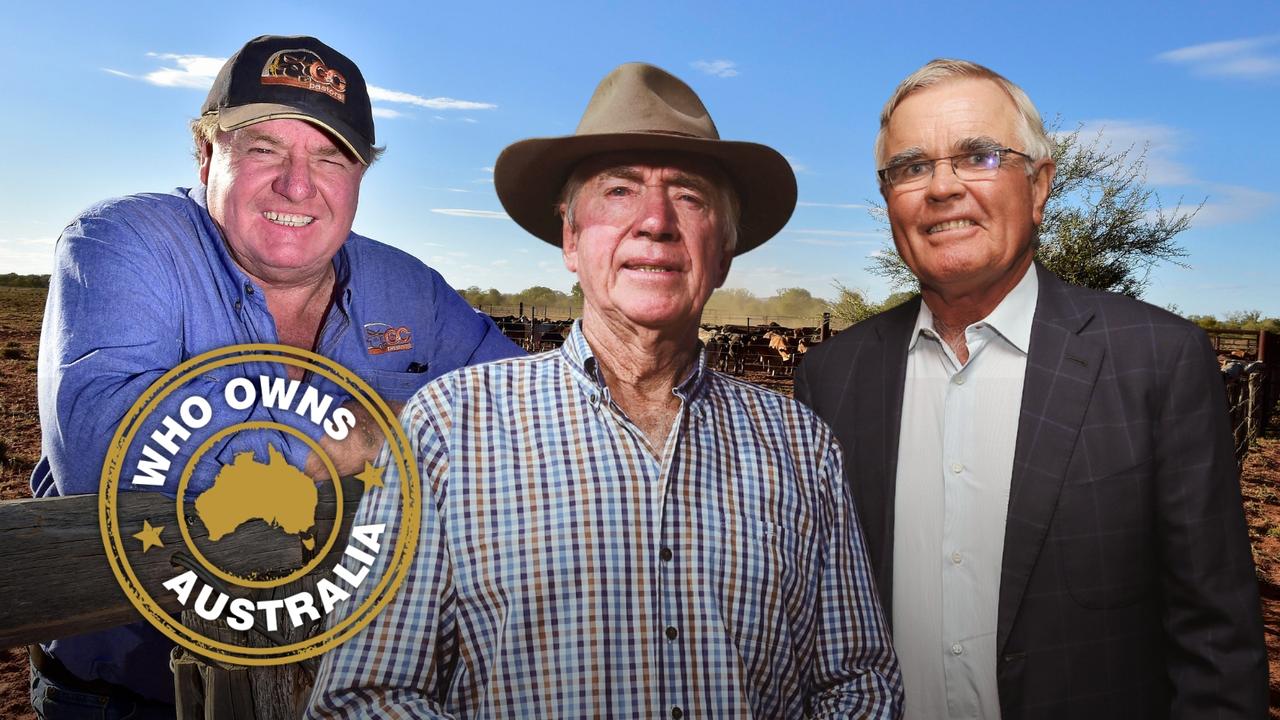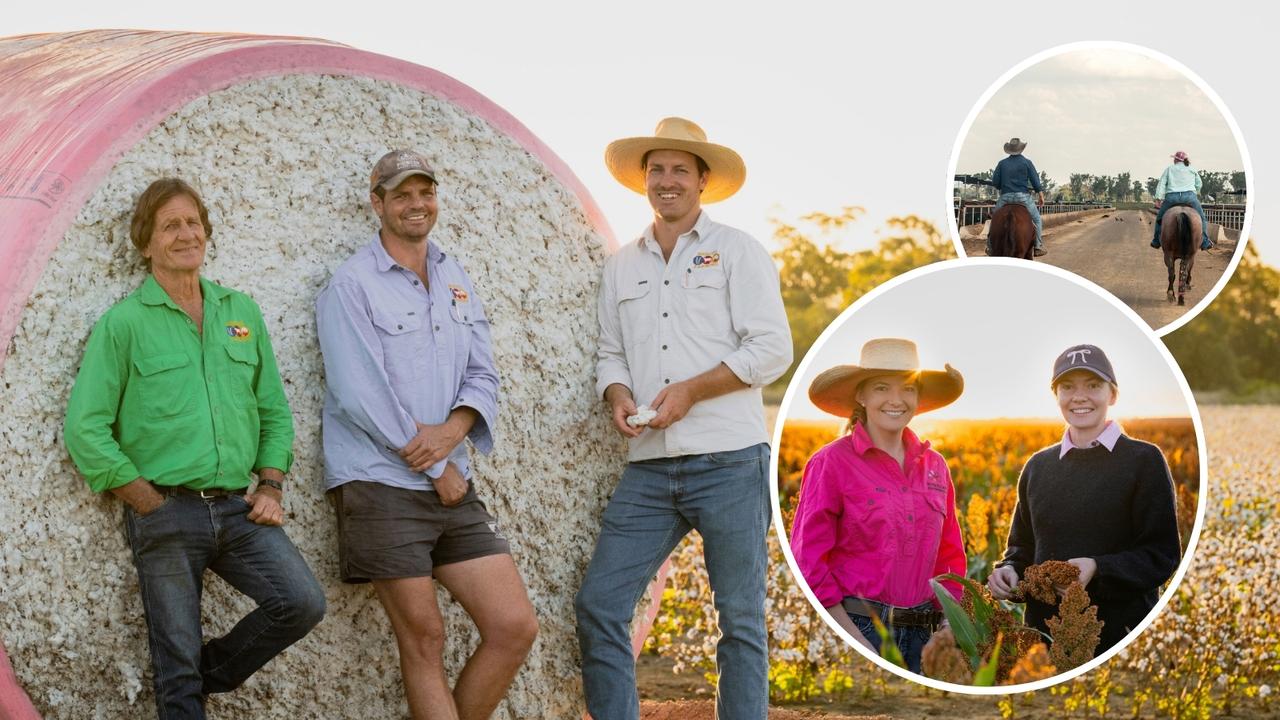Farmers flock to paddock-tested agtech
Bright Australian agtech start-ups prove digital technology can actually work in the paddock to boost profits.

JOHN Fargher has a head for data. But cattle and sheep farming are in his DNA.
Turns out, it’s the ideal trait combo needed for success in the much-hyped agtech sector.
The 34-year-old and his business partners, Justin Webb and Kevin Baum, run one of Australia’s brightest agtech start-ups, which solves a huge problem in the livestock industry – the fact most farmers still run their businesses with pen and paper.
“Dad had a stack of green notebooks as high as you can imagine, together with every single day of writing in a diary about what happened, when it happened and how it happened,” says Fargher, who grew up on Wirrealpa Station, a massive 161,000-hectare expanse of South Australia, north of Quorn.
“That dates back for three generations.”
So, when Webb and Baum approached him about five years ago to launch a tech solution to replace the paddock notebook and digitise livestock producers’ record keeping, he jumped on board.
AgriWebb is a digital farm management system that allows producers to record information on a smartphone in the paddock, share it across their business instantly, meet audit and compliance requirements easily and make data-driven decisions.
In just five years, AgriWebb has notched up 3000 paying customers across Australia and attracted $14 million in investment from UK-based Wheatsheaf group. The system is now also used in the UK, Brazil, South Africa and New Zealand.
Its 3000 Australian subscribers represent about 10 per cent of the national cattle herd. “In states like Tasmania, it is more like 25 per cent,” says Fargher, explaining their focus has been in mixed farming regions – the greener parts of Australia.
Last year’s investment deal opened further opportunities in the British livestock sector, where supply-chain transparency and regulatory compliance are hot issues due to food safety crises such as mad cow disease, foot and mouth, and meat hygiene scares.

AGTECH is being hailed as the magic bullet that will double worldwide food production while cutting carbon emissions, reducing soil degradation and minimising use of water, energy and fuel.
Last year nearly $US7 billion was invested in the global agtech sector, which includes everything from robotics and vertical farming technology to management software and commodity trading portals, according to venture capital group AgFunder.
It’s a huge cash splash, up more than 40 per cent on the previous year, and 300 per cent on 2012.
While spending in Australia is small compared to the US, some Aussie start-ups, including AgriWebb, are winning substantial slices of the pie. AgriWebb’s Wheatsheaf deal was the 16th largest by value in the global sensor and farm management software sector last year.
Investors flock to companies that can deliver on two promises, according to Webb. Their tech works in harsh on-farm environments and they respond quickly to feedback to provide tools fit for purpose.
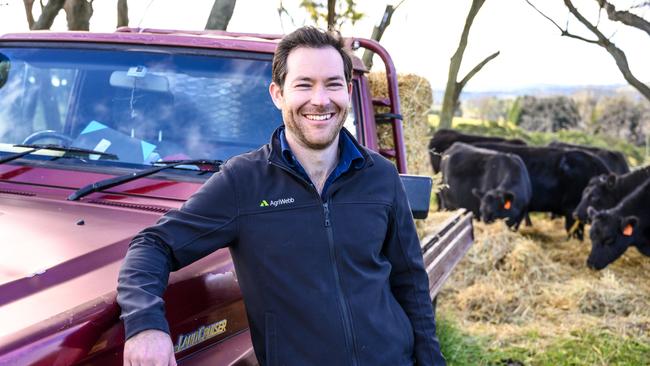
FARGHER and Webb identified the pen-and-paper problem from personal experience.
Wirrealpa station has been in the Fargher family since the 1950s and is still managed by John’s parents, Warren and Barbara. “We muster with a Cessna,” he explains, giving an idea of scale.
His parents have always been innovators, driven to find efficiencies in their cattle and sheep operation. Horses were replaced by motorbikes, then eventually light aircraft, for moving stock and supplies. Bulldozers were sidelined for biological rabbit control. Conventional land management was shelved in favour of organics.
Yet, lamb weights, joining dates, grazing rotation, location of stock – literally all the farm’s operational information – was always recorded by hand, in a tiny spiral-bound book.
“Dad would go back and say, ‘What day did we put the rams out?’, and he would flip back,” Fargher recalls. “Then the fact that notebook gets dropped in the trough or goes through the washing machine, that is a reality, which means all those records and information is gone.”
Webb, chairman and original founder of AgriWebb, is from a farming family in Victoria’s Western District, which runs 7000 crossbred ewes and 900 purebred Angus cattle at Camperdown.
READ MORE: AGJOURNAL
AGRICULTURE’S 20 HOT ISSUES FOR THE 2020S
JIGSAW FARMS HITS CARBON-NEUTRAL GOALS
Educated at Oxford and Harvard, Webb has a strong background in financial management and returned to Australia about seven years ago after completing an MBA in the UK.
As part of a family succession plan, he started reviewing the Camperdown operation’s recordkeeping and decision drivers, to better understand the business model.
“Despite four generations of Australian farming history, I was a city boy and a maths geek and I found myself at our kitchen table being faced with making large operational decisions about our beef and lamb farm,” says the 37-year-old, recalling a meeting with farm management consultants.
“The problem was that as I pushed and scratched at the reasoning of the gathered consultants and advisers … they could only answer me with anecdote and example, not data and robust fact.”
Data-driven decisions were impossible, he says, because management information was not pulled together well enough, not recorded with enough discipline and was not able to be compared against previous years.
“The problem is, at the moment, farmers have a whiteboard with magnets on it that represent the location of their assets and they are making decisions about their enterprise based on historical anecdote,” he says.
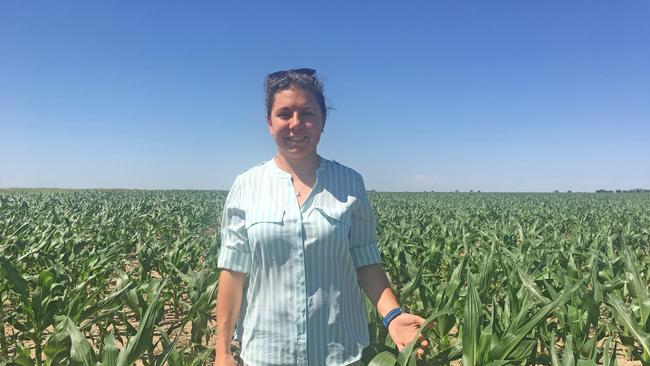
FLUROSAT is another Australian agtech company that has built customers and attracted investment by focusing on problems in the paddock.
The crop health analysis tool for agronomists was developed in 2016 by 27-year-old aerospace engineer Anastasia Volkova and is already being used on four continents.
It uses remote sensing, satellite imagery, weather and soil data to analyse crop health, mainly sugar cane, grains and cotton, then maps results on screen at great speeds and in fine detail.
“FluroSense – our product – is built with agronomists. Every product we build is because they tell us they don’t have it now. We build it very quickly and we are obsessed with a customer focus,” says Volkova, who came up with the idea while working in the aerospace industry. Scanning satellite images as part of her job, she realised how much of the globe was covered in crops and saw the goldmine of information at her fingertips.
She says investment in Australian agtech lags behind the US due to an aversion to risk and inability to scale up quickly enough to deliver results.
FluroSat launched with support from government grants and CSIRO, then gained backing from venture capital funds, most recently closing a deal in July for A$4.6 million (US$3.2M) from Microsoft’s M12 venture fund and a handful of investors.

KEEPING sight of the actual on-farm problem has been crucial to AgriWebb’s success, Webb says.
Webb’s farmer-first mantra involves recruiting talented people who buy in to the approach.
In addition to Fargher, Webb enticed American Kevin Baum to leave his home in the US and jettison a career in the renewable energy sector. Baum is an expert in software as a service. The 34-year-old chief operating officer says joining Australia’s ag sector was an easy choice.
“It is a pillar industry,” he says. “In 150 years, we may not be using Snapchat, but we will be eating food. More efficiently sending pictures of myself to people on the internet is not what gets me going in the morning.
“I’ll admit, I was incredibly green. I had no idea what I was getting myself into.”
They also recruited chief technology officer Phil Chan, who gave up a cushy role at IBM.
The pair spent months on the Webb family’s Camperdown farm to come to grips with the realities of farming before starting development.
“The problems have been so fundamental,” says Chan, explaining the industry is a huge leap from his previous roles, which include starting a company that gave passengers on commercial airlines access to the internet.
“All the developers get out on farm to make sure we are talking directly to farmers. Not just to get their technical requirements,” Chan says. “But to watch how they work. Do they have gloves on, or it is really dirty?
“And, wow, those animals are really big, you can’t take your eye of them or you will be hurt. The system has to work in the environment where these farmers are working.”
Baum and Chan focus on usability, continually improving AgriWebb’s interface and capabilities.
“One of our values is we live for the farmer … if it doesn’t work on farm, everything falls over,” Baum says.
“The core interface came from replicating what we were seeing in shearing sheds. We have a map, because if you walk into any farm, you see the map up on the wall. People don’t think of their farm as a spreadsheet.”

LIVESTOCK producer Andrew Carruthers says AgriWebb’s tight feedback loop is a refreshing change from tech companies he has worked with in the past.
As managing director of AD Commodities, he runs 2000 cattle and 2500 sheep across 3500 hectares near Armidale, NSW, with employees working hundreds of kilometres apart. He says the idea farmers are opposed to using digital agtech is a fallacy.
“The old saying that ag isn’t ready for tech is the biggest load of baloney,” Carruthers says. “Tech is not ready for ag, we have had so many false starts.
“We were impressed that they were an open and responsive team. Because it is a cloud-based app, everyone is on the same page at every minute of the day.”
Lachlan Seears of Boonderoo Pastoral Company says technology is an integral part of his business, but in his view it must lead to increased profitability and efficiency to be worth the investment.
“I have always been a big advocate for utilising technology on the farm,” says Seears, who runs a mixed livestock and cropping operation near Lucindale, in South Australia, and was an early adopter of GPS in his cropping machinery.
“I had been looking for some time for an app that gave us the ability to document livestock operations and record a history of what happens.”
Seears waited for AgriWebb to be iPhone compatible before coming on board.
AgriWebb’s founders are under no illusions about competition. They know they’re not the only ones working in this space, but so far their customer-centric strategy has given them an edge.
“Building something, going out and testing it, and getting a very tight feedback loop with our customers to understand what their problems are, then solve those problems,” Webb says, “that, by definition, grows the solution.”

PALM PILOT
INITIALLY AgriWebb was tablet only, but feedback from their first customer led to a quick transition to smartphone.
“He found us online somehow, rang and said, ‘I’m really interested in your product because my notebook has gone through the wash’,” says Fargher, remembering the early conversations with the West Victorian farmer.
Multiple farm visits, cups of tea around the table and discussions later, Fargher and Baum made the three-hour drive from Melbourne to the farmer’s property, excited about the prospect of their first sale.
“As we drove towards his farm, we see him at the end of the driveway on the main road,” Fargher says. “I said to Kevin, ‘this is a bit of a problem’.”
Every other visit they had been invited up to the house.
“Sure enough, we were kicking dust at the main gate. At the end of it, he said, ‘I’m not going to buy your product. It just doesn’t do the things I want it to do’.
“We drove back to Melbourne, it was a Friday, and we didn’t speak to each other the whole way.”
A main sticking point had been the tablet issue – the farmer didn’t want to tote his tablet across muddy paddocks. On the Monday, Fargher plucked up the courage to call him for feedback. “He said, ‘You know, I have thought about it over the weekend, and I am going to buy it,” Fargher says. “I asked him what changed his mind and he said, ‘If people like me don’t take a chance on people like you, this industry is never going to go anywhere’.”
Fargher says they made swift upgrades to address all the concerns, including making AgriWebb available on smartphones.
The farmer remains a customer to this day.
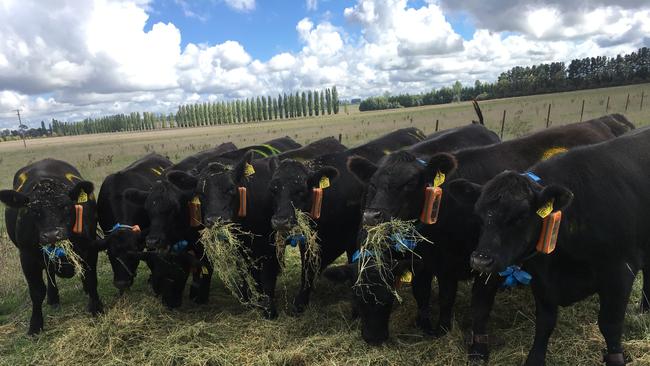
VIRTUAL FENCE
February’s floods across Queensland, which wiped away thousands of kilometres of fencing, may have created an opportunity for Melbourne company Agersens, which is commercialising eShepherd virtual fencing cattle collars.
The GPS-enabled collar trains animals to respond to virtual fence lines by delivering an audio cue or small electric shock. It allows farmers to draw paddock boundaries wherever they want.
“CSIRO had developed and patented it (the collar) and believed it was ready for commercialisation. They had no partners until we came forward,” says company ambassador Ian Reilly, who launched Agersens with chief executive Jason Chiffley in 2014.
“The system itself really is allowing producers to unlock the value between animal and pasture management,” Chaffey says.
READ MORE: AGJOURNAL
MACQUARIE BANK’S FIELD MARSHAL TAKES CHARGE
PLANT-BASED PROTEINS PLAY ON GUILT
In June this year, the company secured $14.75 million in funding from investors including stock control giant Gallagher Group, to commercialise the technology.
Chaffey says the current flurry of activity in the agtech sector is reflective of the urgent need to revolutionise some parts of food production.
“While virtual fencing had been discussed in the past, the market itself wasn’t ready or accepting of that concept itself to add any value,” Chaffey says. “Really in the last five years it has become the right time because agriculture is needing to find new ways to improve productivity and find new solutions.”
About 50 trials have been carried out over the past 12 months, with eShepherd collars in use on animals in Australia and the US.
With plans to bring the product to market in the coming 12 months, they are focusing on the needs of the large-scale beef industry.
“The goal of Australia’s ag industry is to be a $100 billion industry by 2030, and to do that agtech will need to play an important role,” Chaffey says.

